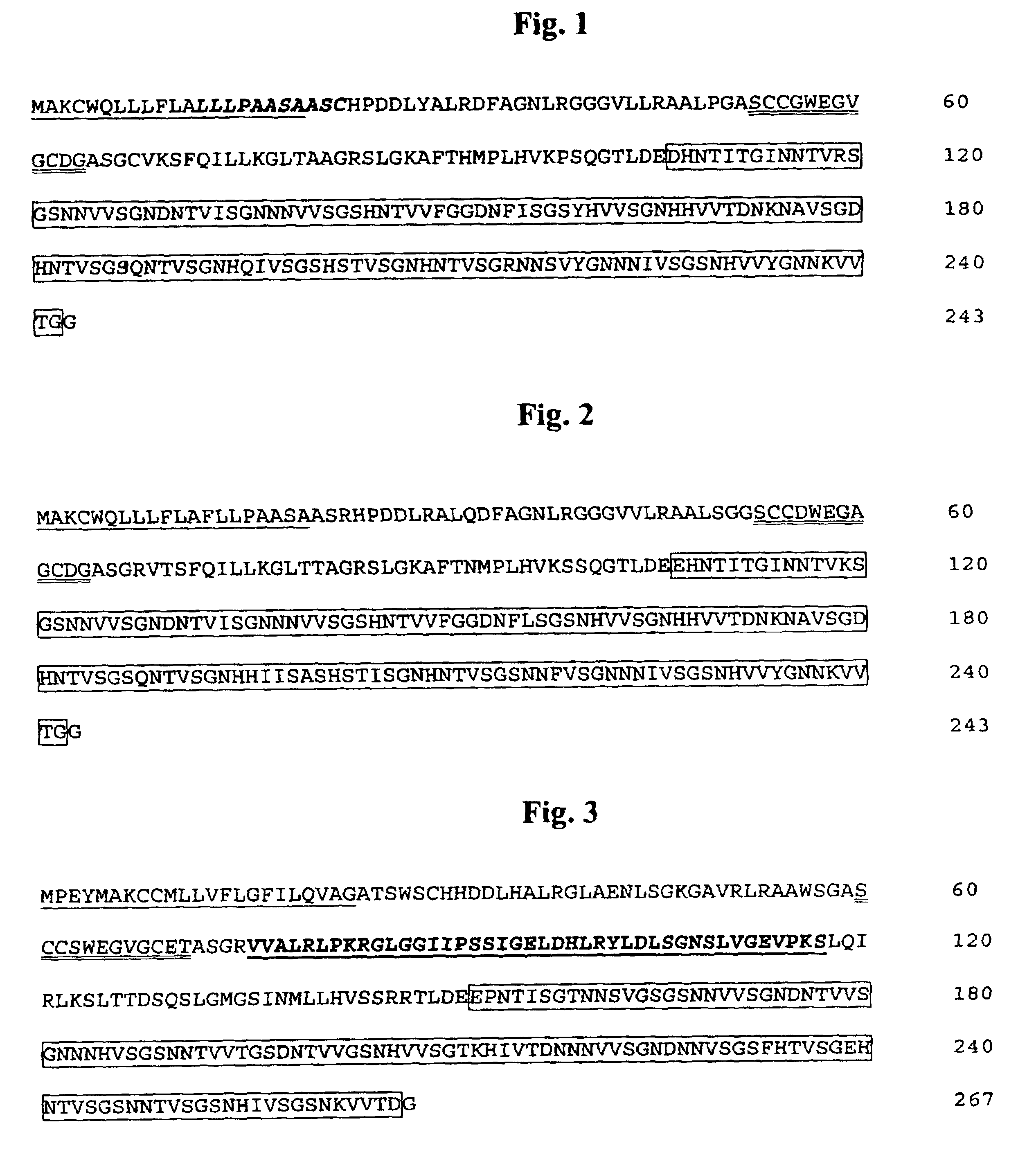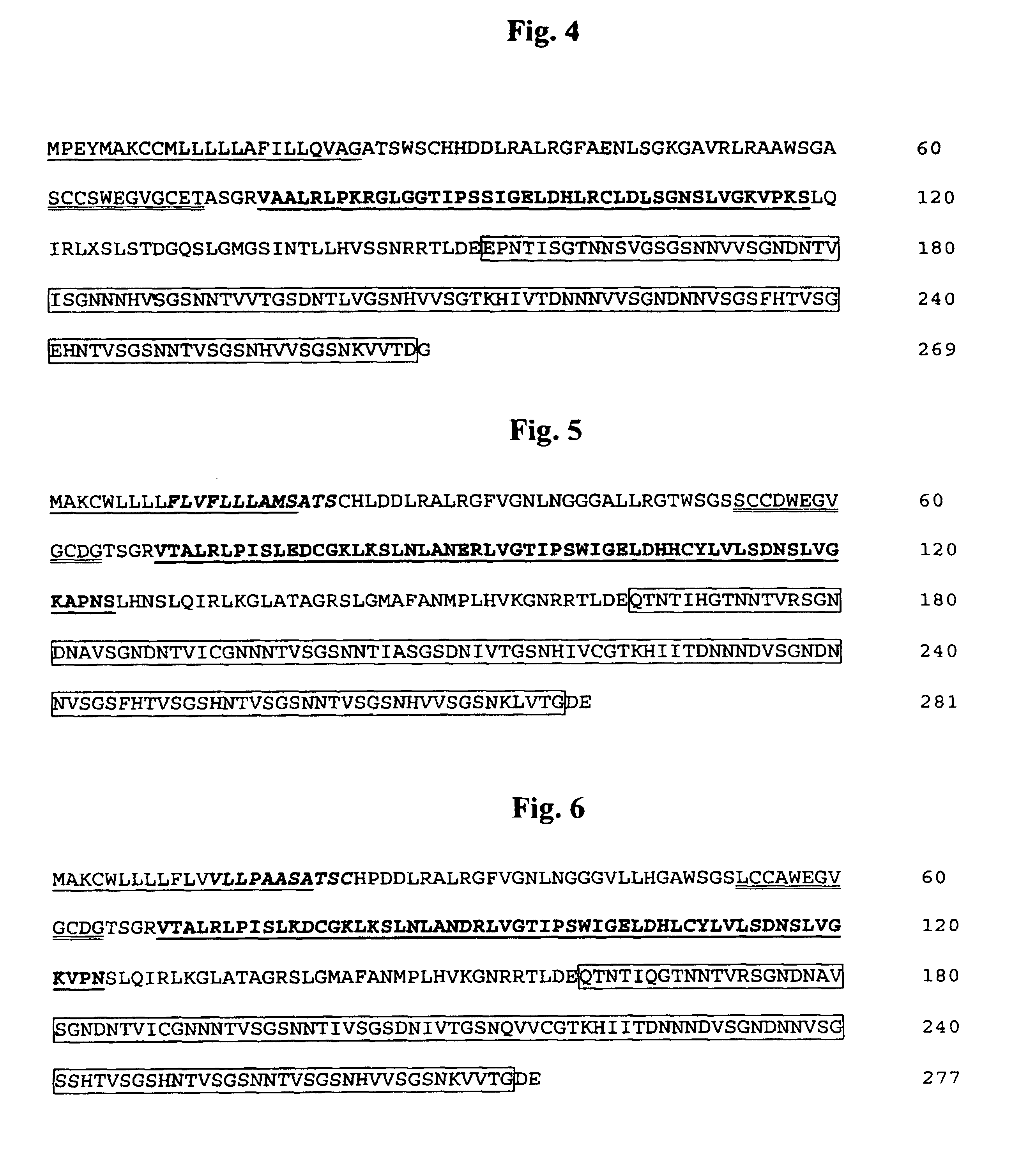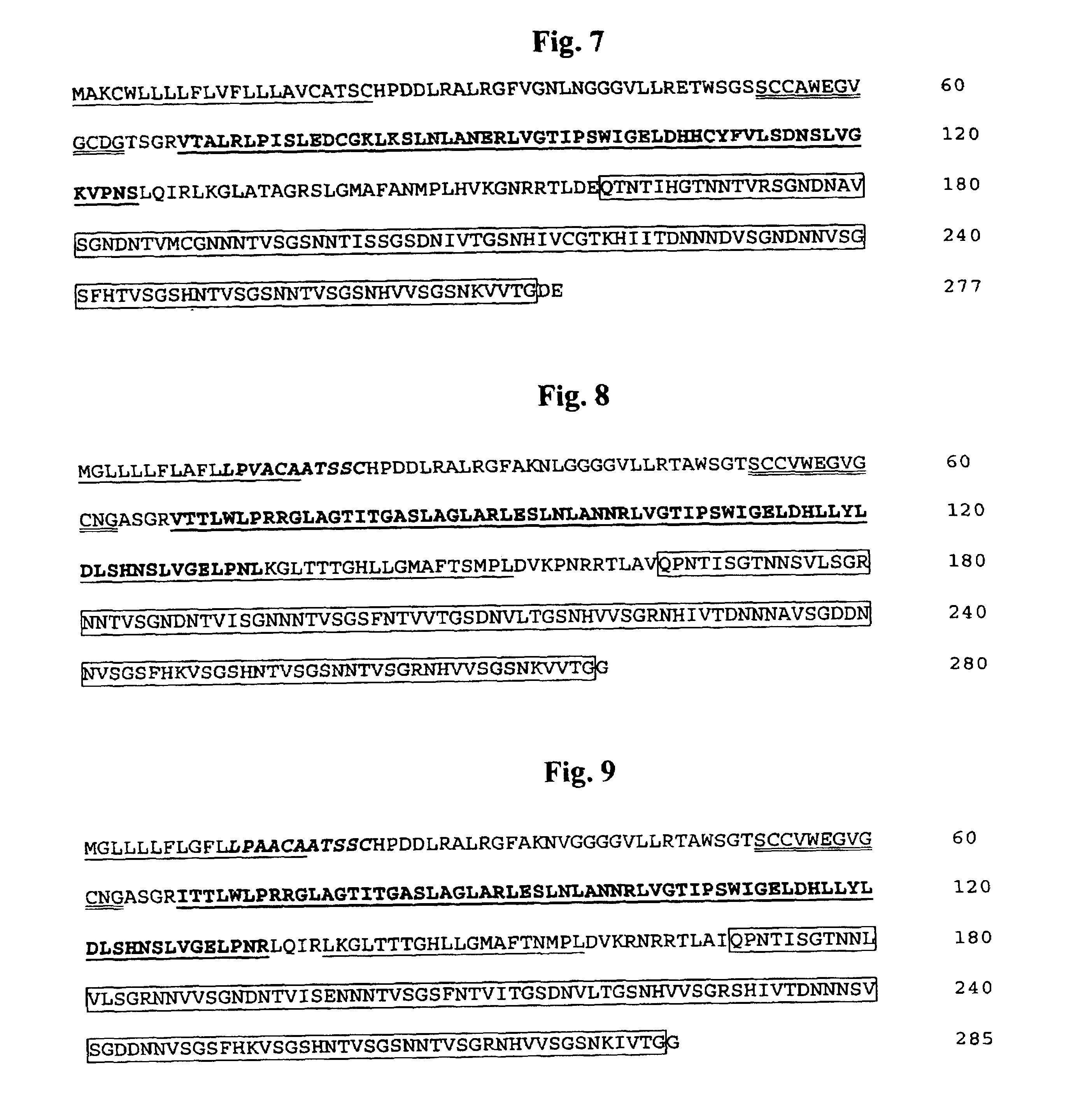Antifreeze proteins isolated from forage grasses and methods for their use
a technology of antifreeze protein and grass, which is applied in the field of polynucleotides isolated from forage grass tissues, can solve the problems of crystals having the ability to irreparably damage cells, difficult to identify functional domains of afp proteins, and difficult to identify residues involved in ice-protein interaction, etc., and achieves enhanced activity.
- Summary
- Abstract
- Description
- Claims
- Application Information
AI Technical Summary
Benefits of technology
Problems solved by technology
Method used
Image
Examples
example 1
Isolation of cDNA Sequences from L. perenne and F. arundinacea cDNA Libraries
[0114]L. perenne and F. arundinacea cDNA expression libraries were constructed and screened as follows. Tissue was collected from L. perenne and F. arundinacea during winter and spring, and snap-frozen in liquid nitrogen. The tissues collected include those obtained from leaf blades, leaf base, pseudostem, roots and stem. Total RNA was isolated from each tissue type using TRIzol Reagent (BRL Life Technologies, Gaithersburg, Md.). mRNA from each tissue type was obtained using a Poly(A) Quik mRNA isolation kit (Stratagene, La Jolla, Calif.), according to the manufacturer's specifications. cDNA expression libraries were constructed from the purified mRNA by reverse transcriptase synthesis followed by insertion of the resulting cDNA in Lambda ZAP using a ZAP Express cDNA Synthesis Kit (Stratagene), according to the manufacturer's protocol. The resulting cDNA clones were packaged using a Gigapack II Packaging Ex...
example 2
Use of Grass Anti-freeze Protein Genes to Alter Ice Crystal Structure
Transformation of Arabidopsis Plants With Grass Anti-freeze Protein Genes
[0125]Sense constructs containing a polynucleotide including the coding region of AFP genes isolated from Lolium perenne or Festuca arundinacea (SEQ ID NOS: 1, 3, 5, 8 and 10) were inserted into a binary vector and used to transform Agrobacterium tumefaciens LBA4404 using published methods (see, An G, Ebert P R, Mitra A, Ha S B, “Binary Vectors,” in Gelvin S B, Schilperoort R A, eds., Plant Molecular Biology Manual, Kluwer Academic Publishers: Dordrecht, 1988). The presence and integrity of the binary vector in A. tumefaciens was verified by the polymerase chain reaction (PCR) using vector primers.
[0126]The A. tumefaciens containing the sense gene constructs were used to transform Arabidopsis, by floral dipping (Clough and Bent, Plant J. 16:735–743, 1998). Several independent transformed plant lines were established for the sense construct for...
example 3
Use of Grass Anti-Freeze Protein Genes to Change Ice Crystal Size
[0128]A number of grass anti-freeze protein genes (SEQ ID NOS: 1, 3, 5, and 11), as well as a truncated gene derived from AFP1 (SEQ ID NO: 1), were expressed in Escherichia coli and purified using standard protocols. The grass genes were amplified by PCR using the forward and reverse primers listed in SEQ ID NOS: 35 and 36 for AFP1 (SEQ ID NO: 1), SEQ ID NOS: 39 and 40 for AFP2 (SEQ ID NO: 3), SEQ ID NOS: 41 and 42 for AFP3 (SEQ ID NO: 5), and SEQ ID NOS: 43 and 44 for AFP5 (SEQ ID NO: 11). The truncated AFP1 gene was amplified using the primers given in SEQ ID NOS: 37 and 38. The resulting fragments were cloned into a modified pET16b expression plasmid (six histidines followed by an EcoRI site then the BamHI site) in frame with the histidine Tag sequence. The resulting plasmids were transformed into Escherichia coli BL21 cells using standard protocols and protein expression induced using IPTG. The insoluble recombinan...
PUM
| Property | Measurement | Unit |
|---|---|---|
| Volume | aaaaa | aaaaa |
| Volume | aaaaa | aaaaa |
| Time | aaaaa | aaaaa |
Abstract
Description
Claims
Application Information
 Login to View More
Login to View More - R&D
- Intellectual Property
- Life Sciences
- Materials
- Tech Scout
- Unparalleled Data Quality
- Higher Quality Content
- 60% Fewer Hallucinations
Browse by: Latest US Patents, China's latest patents, Technical Efficacy Thesaurus, Application Domain, Technology Topic, Popular Technical Reports.
© 2025 PatSnap. All rights reserved.Legal|Privacy policy|Modern Slavery Act Transparency Statement|Sitemap|About US| Contact US: help@patsnap.com



